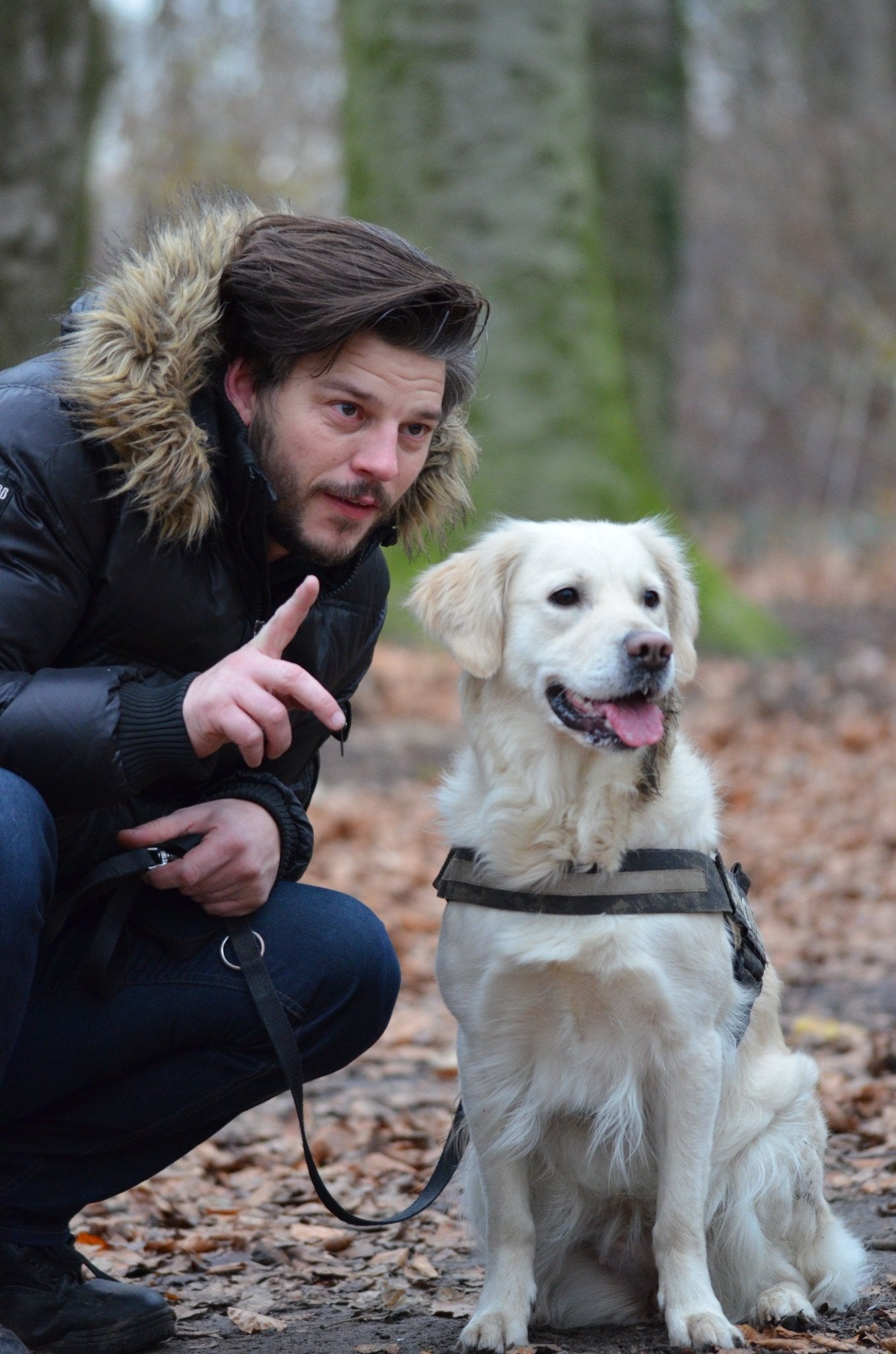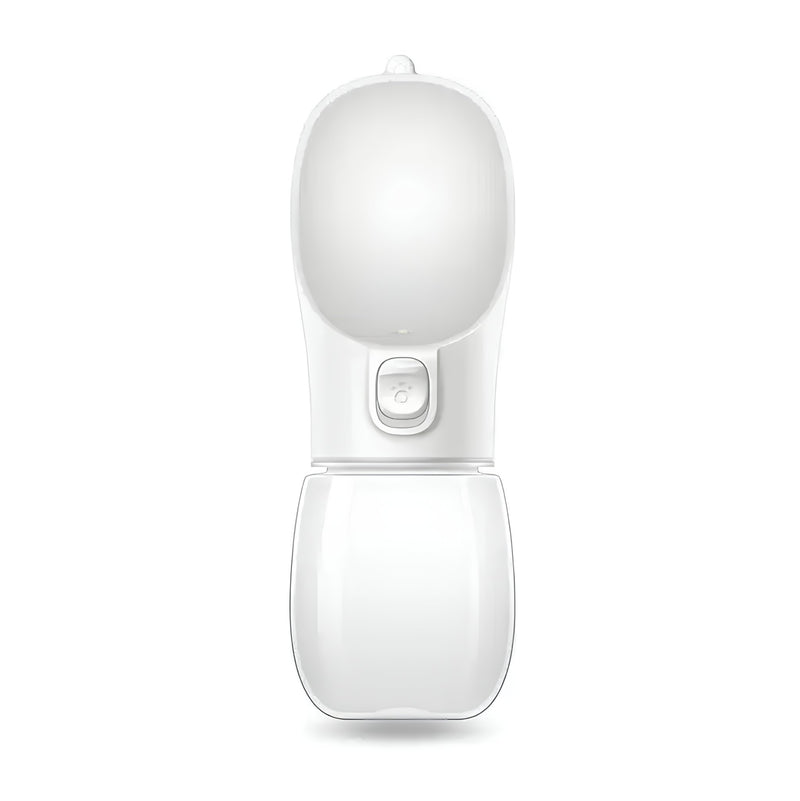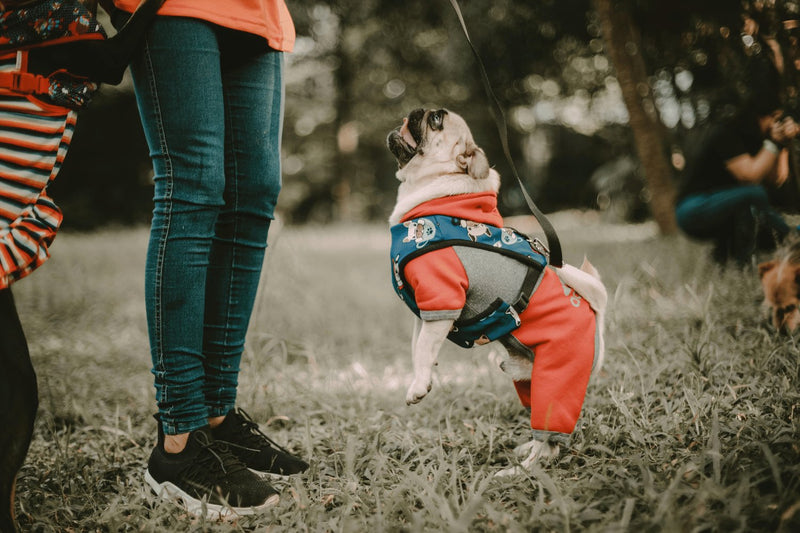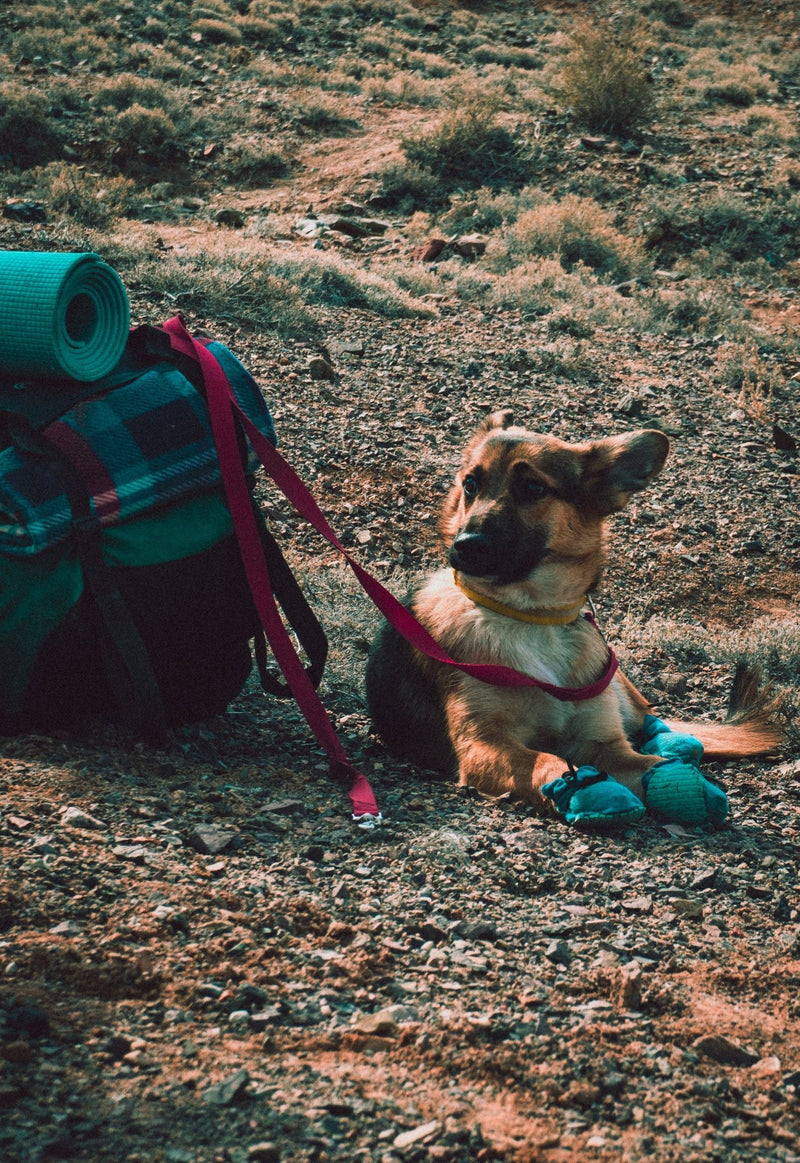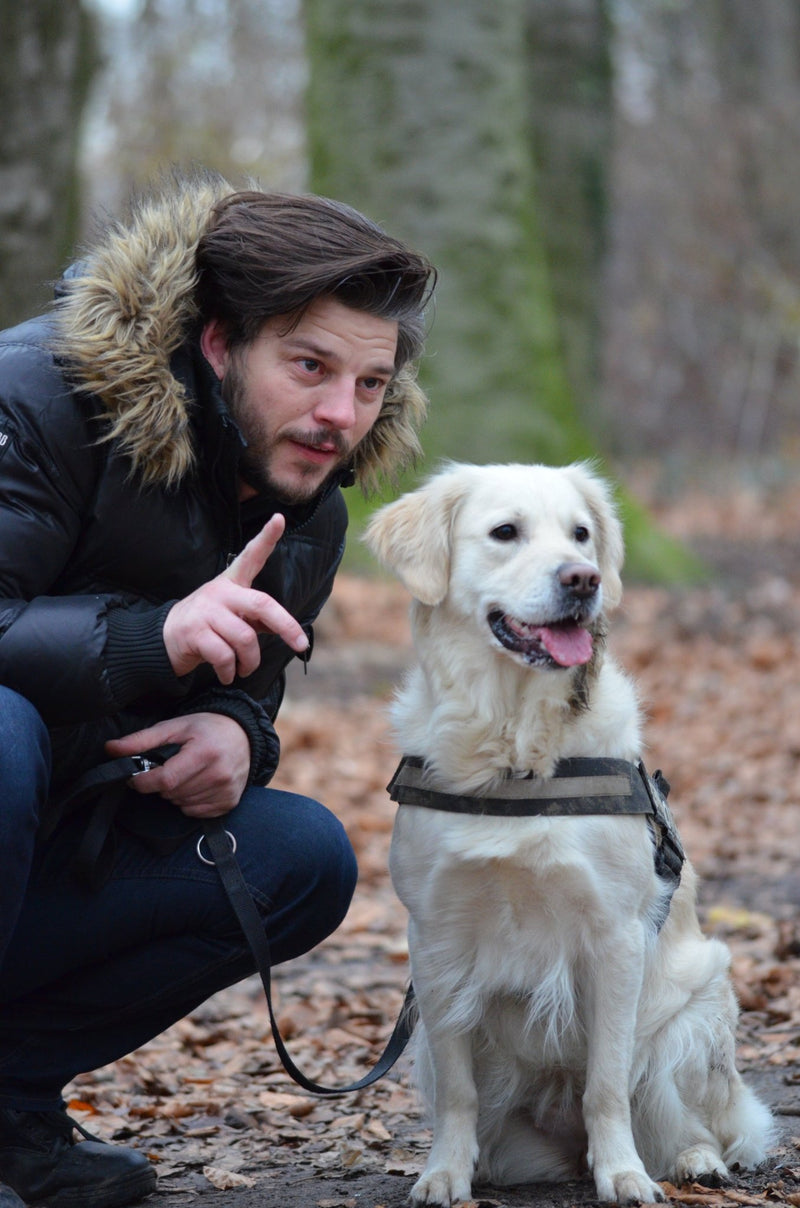
New to the dog parent game? Potty training your pup might seem like trying to nail jelly to a wall at first. But, hey, just like life (or assembling that weird piece of IKEA furniture), break it down step-by-step and it's a breeze.
Just whip up a plan, channel your inner zen, and keep those eyes peeled. Before you know it, your furball will know where to do their business without turning your place into a minefield.
Before embarking on this training journey, it's crucial to be mentally prepared and fully engaged. Ensure you're focused and ready to commit!
Hey there, fellow puppy parents! So, diving into puppy training is a lot like tackling any of life's big challenges. It's not just about having the toys, treats, and time—it's really about gearing up mentally and emotionally.
I mean, think about this killer quote from the basketball legend Phil Jackson: "The strength of the team is each individual member. The strength of each member is the team." Now, swap out 'team' for 'puppy-parent duo', and you'll see what I'm getting at. Training isn't a solo mission; it's a team effort between you and your fur baby.
It's less about barking out commands (pun intended) and more like, well, a tango. It’s all rhythm, trust, and understanding. For every little mess or mistake, there's a win just around the corner. And here's the golden nugget: while you're busy teaching Fido to sit, stay, or fetch, he's schooling you in patience, love, and the pure joy of life.
So, before you start, take a breather, get your mind right, and dive in. Because getting in the groove mentally isn't just a tip—it's the secret sauce to puppy training success!

Step 1: The Crate Gameplan
Every seasoned dog trainer, including experts like Muto, will vouch for the crate's role as the MVP in the potty-training playbook. Think of the crate as your puppy's own personal suite, where they naturally avoid soiling because, well, who wants to mess up their cosy space? This safe haven is your ally in preventing those surprise indoor 'gifts' while teaching your furball the importance of 'holding it'.
A couple of pro-tips to make crate training a breeze:
- Size Matters: Choose a crate that's Goldilocks-perfect. Not too spacious, tempting them to designate a toilet corner, and not too cramped, leaving them restless. If you're training a little pup that's destined for bigger things, a size-adjustable crate with partitions is the way to go.
- Home Sweet Crate: Your mission is to make your pup see the crate as their cozy nook. Make it inviting, filled with positivity. Remember, it's their retreat, not a penalty box.
Didn't hit the potty jackpot during an outdoor break? Here's the game plan: Once inside, lead your pup straight to the crate or a designated zone. Let them chill there for about 15 minutes or so, and then it's round two outdoors.
The great outdoors can be a sensory overload for your puppy. It's only when they're back in familiar territory that they remember, "Oops, I needed to pee!" So, giving them limited freedom post an unsuccessful potty trip outdoors is key.
Lastly, for those with spacious homes, baby gates are your best friends. They limit your puppy's access, reducing their search for those sneaky potty spots. When they're not lounging in their crate, either they're under your watchful eye, or they're kept in a controlled space.
This strategy keeps those unscheduled pee and poop surprises to a minimum.
Step 2: Schedule Like a Pro!
Step right up to the pivotal step two of potty training: crafting the perfect puppy timetable. Remember, in the world of puppy potty training, consistency isn’t just the key—it's the entire lock, door, and house!
Building a stable, day-to-day routine will not only pave the way for a pee-and-poop-disciplined pup but also nurture a bond of trust and safety between you and your little furball.
Here’s your go-to blueprint for the schedule:
- Chow Time: Stick to fixed feeding hours. A consistent feed leads to a predictable 'need to go' time.
- Potty Patrol: Regularly timed outdoor breaks.
- Crate Chronicles: Allot moments for crate or confined relaxation.
- Fun & Frolic: Schedule some playtime. A happy pup is an obedient pup!
- Dreamland Diaries: Designate their bedtime.
Ensure this puppy protocol is a family affair. Everyone in the house should be in the know. And, here’s a tip: Don't just rely on your memory. Make it official—print the schedule and slap it on your fridge. Or, go digital and send it to all family members.
To be extra meticulous, maintain a puppy diary. Log any 'oops' moments and celebrate potty victories, gradually increasing time between breaks.
Now, a reality check. Puppies, especially the younger ones, don't come with a fully functional bladder. So, for all the newbie puppy parents, initially aim for a potty break every 45 minutes during their active hours.
Your observation skills will come into play here. Adjust the timings as your puppy shows signs of progress. Ever heard of the age-to-hour guideline? For instance, a three-month-old pup should ideally hold it for three hours. But, patience is the name of the game. Ease into it and allow your pup to get accustomed to the routine.
Keen on mastering the art of potty scheduling? We've got a comprehensive guide waiting just for you.

Step 3: Let's Do The Potty Dance!
Laying the foundation with a schedule and a cosy crate, you're all set for the potty grandeur. But let's not forget, just having a plan isn't enough; it's showtime for your puppy!
Some potty pointers to keep in your playbook:
- First Impressions Count: When you're introducing your puppy to your home, lead them straight to their future potty paradise outside. It's like setting up a rendezvous spot. “Here’s where the magic happens, buddy!”
- Leash'em Up: Puppies have an attention span as short as... oh, look, a squirrel! Keeping them on a leash during potty breaks, even in a fenced yard, will help steer them clear of distractions. This isn't just to ensure cleanliness; it’s about cementing the connection that this very act fetches them some brownie points (or actual treats).
- Time It Right: Allocate a 10–15-minute window for the potty mission. Stay calm, go low on chatter, and let them concentrate. A no-go? Back to the crate they go!
- Talk The Potty Talk: Coin a signature potty phrase. Maybe a classic “go potty” or a quirky “release the kraken”. Timing's crucial; use it right when they're about to go or are in the act. This cements the connection between the cue and the act.
- Treats Galore: Nailed the potty act? Reward them immediately! Offer a treat that they'd dance for. Timing is everything here. Muto wisely says, “A well-timed treat can revolutionize the potty game.” Eventually, tone down on the treats, shifting to words of affirmation like a hearty, "Good job, champ!"
Remember, positive reinforcement is the magic wand in this potty-training journey. Keep it consistent, keep it rewarding, and soon, you’ll have a potty-pro pup prancing around!
Step 4: Doubling Down on Potty Time!
Stay committed to that potty schedule you've worked hard to craft. It's tempting to sometimes think, "Oh, they'll be fine for just a bit longer," but sticking to the plan is paramount. Let's face it, every puppy is bound to have a little accident here and there.
The trick is to ensure these 'whoops' moments don't become the norm. When unsure, always err on the side of caution and take them out. As Rodriguez emphasizes, it's on us, the trainers and caregivers, to really pull out all the stops. If you find that sweet groove where your fur buddy is getting the hang of doing their business outside, that's your cue!
Double down on your dedication, be mindful of the time, and ensure you're always ahead of their needs. By overdelivering on our end – taking them out more than we think and managing our time effectively – we're setting the stage for our pups to understand the rhythm of potty breaks, encouraging them to patiently wait for their outdoor time.
Step 5: Navigate Accidents with Insight and Care
Despite our best efforts, accidents are inevitable in the journey of puppy potty training. However, your response to these little mishaps can either accelerate or derail the training process. If you catch your pup in the act indoors, a firm, attention-grabbing "NO" or “NOPE” (as one pro suggests) can be an effective interrupter without resorting to yelling.
Discovering a mess after the fact? Stay calm. Don’t let anger take over; scaring or punishing the puppy isn't productive, and rubbing their nose in the mess is counterproductive. Instead, use these moments as instructive checkpoints. Noted a pattern? Adjust the potty schedule accordingly.
To keep your indoors scent-neutral, clean accident spots promptly using an enzymatic cleaner. This prevents your pup from marking the same spot again. Remember, persistent indoor accidents could be symptomatic of underlying fear or trauma. If you have these suspicions, it might be beneficial to consult a dog behaviourist or trainer.
On the topic of puppy pads: While they might seem like a handy solution, many trainers, including us, advise caution. Introducing pee pads may inadvertently train your puppy to believe the indoors is a bathroom. Transitioning from pads to outdoor pottying can be a challenge.
Not only can pads be a confusing crutch, but they also carry hygienic concerns and potential chewing hazards. Unless faced with mobility constraints, outdoor potty sessions remain optimal – beneficial both for house-training and overall mental enrichment.
Remember, while potty training is a test of patience, it's also a beautiful bonding opportunity, laying the foundation for many more teachings to come.

FAQS
1. How often should I take my puppy out for potty breaks?
For young puppies, especially in the initial weeks following their adoption or purchase, it's crucial to take them out approximately every 45 minutes to an hour during their waking hours.
Their small bladders and limited bladder control mean they'll need frequent opportunities to relieve themselves. As they mature and develop better bladder control, the duration between potty breaks will naturally extend. By the age of 5 months, many puppies can hold it for up to 4 hours, though this can vary.
Keep in mind that factors like water intake, diet, and activity levels can influence how often they need to go. Regular observation and adjusting the schedule based on their needs will ensure successful potty training.
How long does it typically take to potty train a puppy?
The journey of potty training varies for every puppy, taking into account their individual temperament, breed, and learning capacity. On average, a good number of puppies demonstrate a solid grasp of potty-training principles between the ages of 4-6 months.
However, it's essential to understand that 'mostly potty trained' doesn't mean perfection. Accidents can and likely will happen even after initial training. For some dogs, especially those with more independent or stubborn personalities, achieving full house training can stretch up to a year or occasionally even longer.
Consistency, patience, and positive reinforcement are the keys to success. Factors like the training methods used, the puppy's early experiences, and the environment they're in can also influence the duration of the training process.
How can I handle night-time potty breaks?
Night-time potty breaks can be a bit challenging, especially during the initial stages of a puppy's life. For the youngest puppies, their small bladders necessitate one or two trips outside during the night. When handling these breaks, it's crucial to keep the environment calm and low energy; this isn't playtime.
Use soft lighting, avoid engaging in play, and return the puppy to their sleeping space promptly after they've done their business. Over time, as your puppy matures and their bladder capacity increases, you'll notice they can sleep longer stretches without needing a break.
To facilitate longer sleep durations, ensure your puppy gets a potty break right before bedtime and avoid giving them large amounts of water close to sleep time. If you remain consistent and attentive to their needs, most dogs will eventually sleep through the night without requiring a bathroom trip.
Remember, every puppy is unique, so adjust routines based on what works best for your pet.
My puppy seems to be having more accidents, is something wrong?
A sudden uptick in accidents can indeed be concerning. Several factors might be contributing to this behaviour. Medical issues such as urinary tract infections, bladder stones, or gastrointestinal upsets could be a cause.
Dietary changes, like a new type of dog food or giving different treats, can sometimes upset their digestive system, leading to more frequent bathroom needs. Emotional factors like stress, anxiety, or significant changes in their routine or environment might also result in increased accidents.
It's essential to monitor the situation closely. If the problem persists or if there are additional symptoms like changes in appetite or behaviour, lethargy, or blood in urine or stool, it's crucial to seek advice from a veterinarian. They can provide guidance and ensure your puppy's health and well-being are intact.
What if my puppy seems scared or reluctant to go potty outside?
A puppy's hesitance to go potty outside can sometimes be traced back to a specific incident or generalized anxiety about the outdoor environment. They might have had a negative experience such as a loud noise, a frightening encounter with another animal, or even a harsh reaction to an accident they had outdoors.
To help ease their apprehension, ensure that their outdoor potty spot is quiet and free from potential disturbances. Using a leash can help guide them and offer a sense of security. Positive reinforcement, like offering treats or praises when they do go potty outside, can create a more positive association with the experience.
If the reluctance continues or seems deeply ingrained, you might want to consider seeking advice from a professional dog trainer or behaviourist who can offer specialized techniques and insights to help your puppy overcome their fear.

